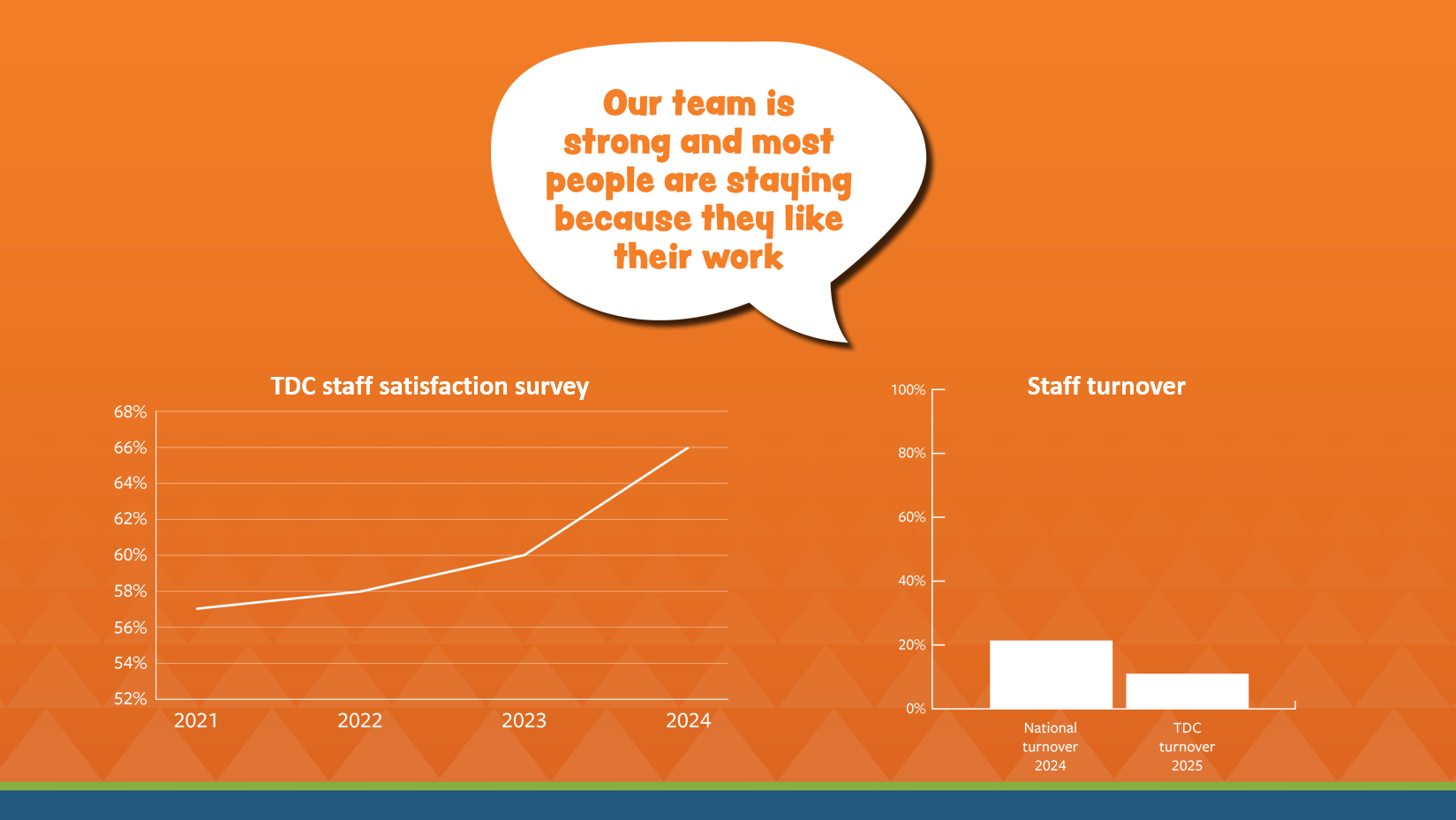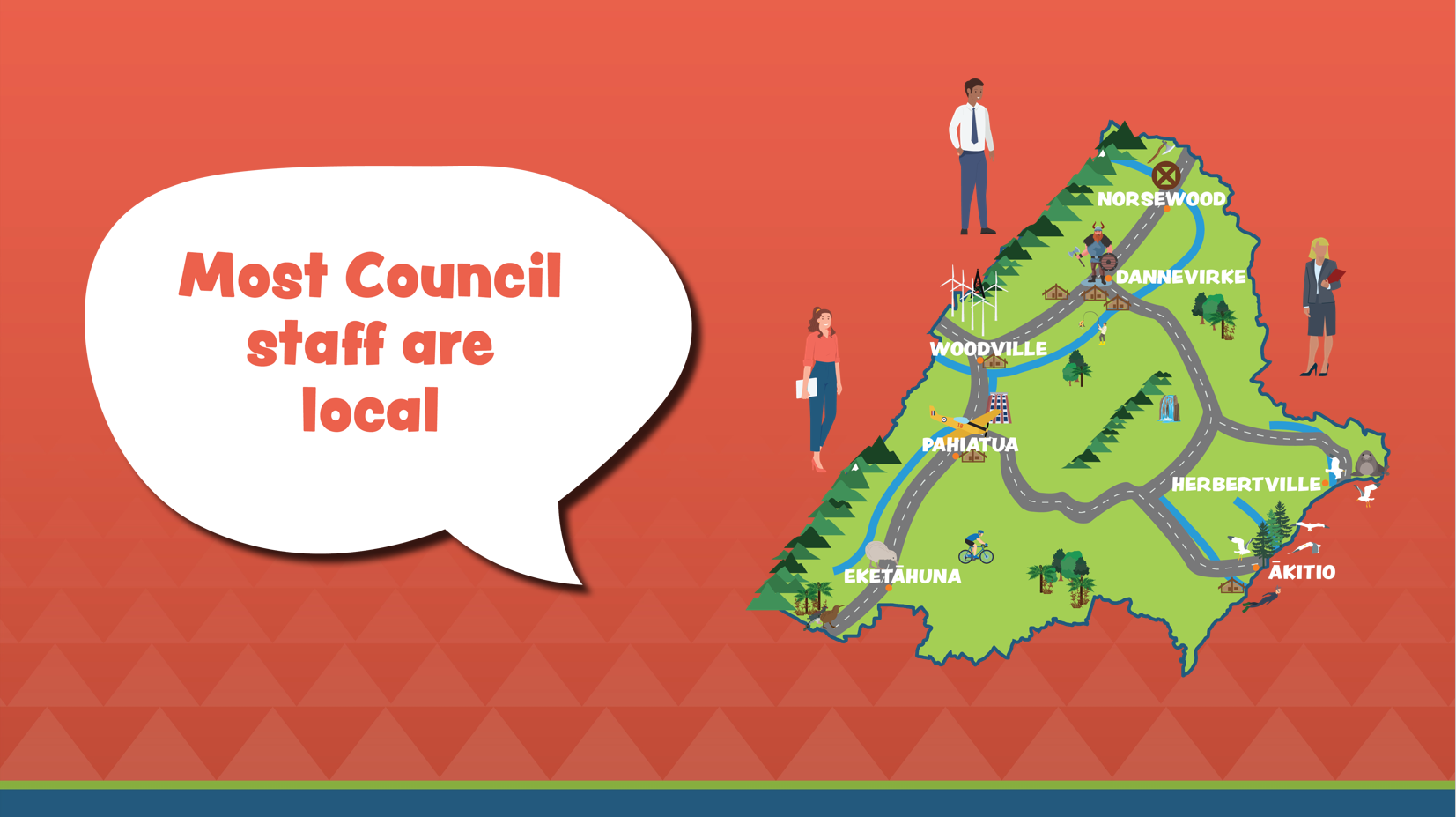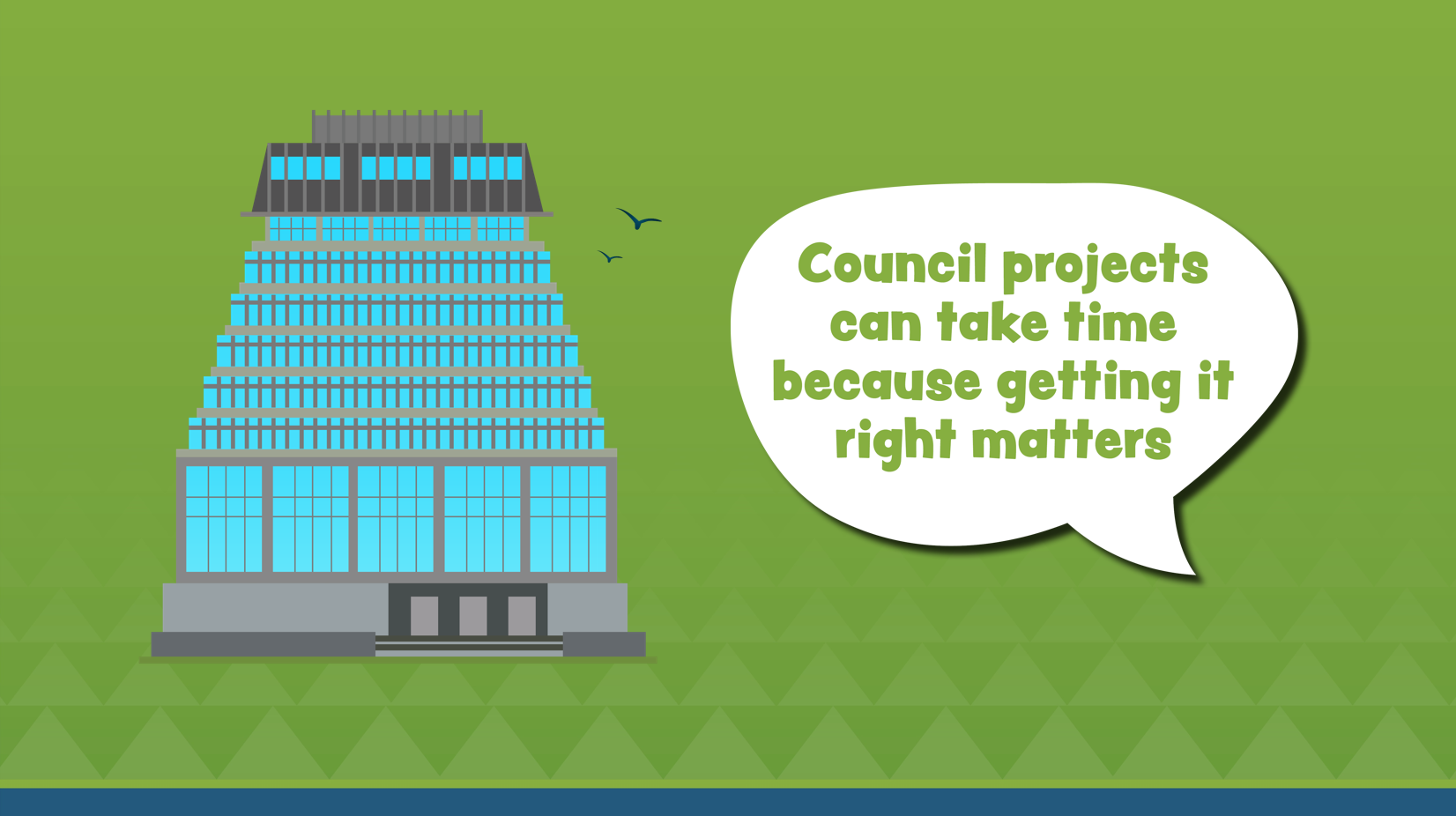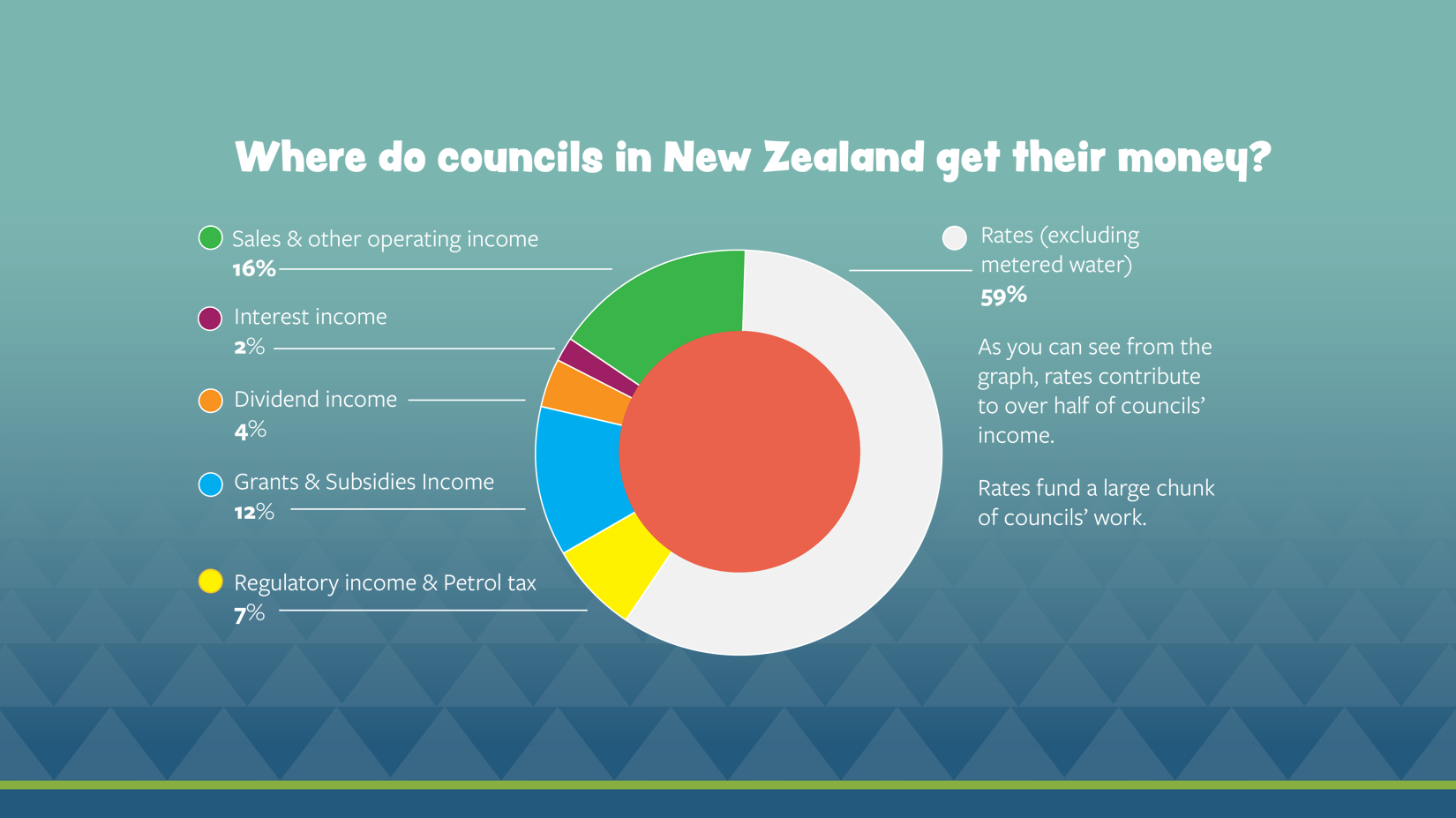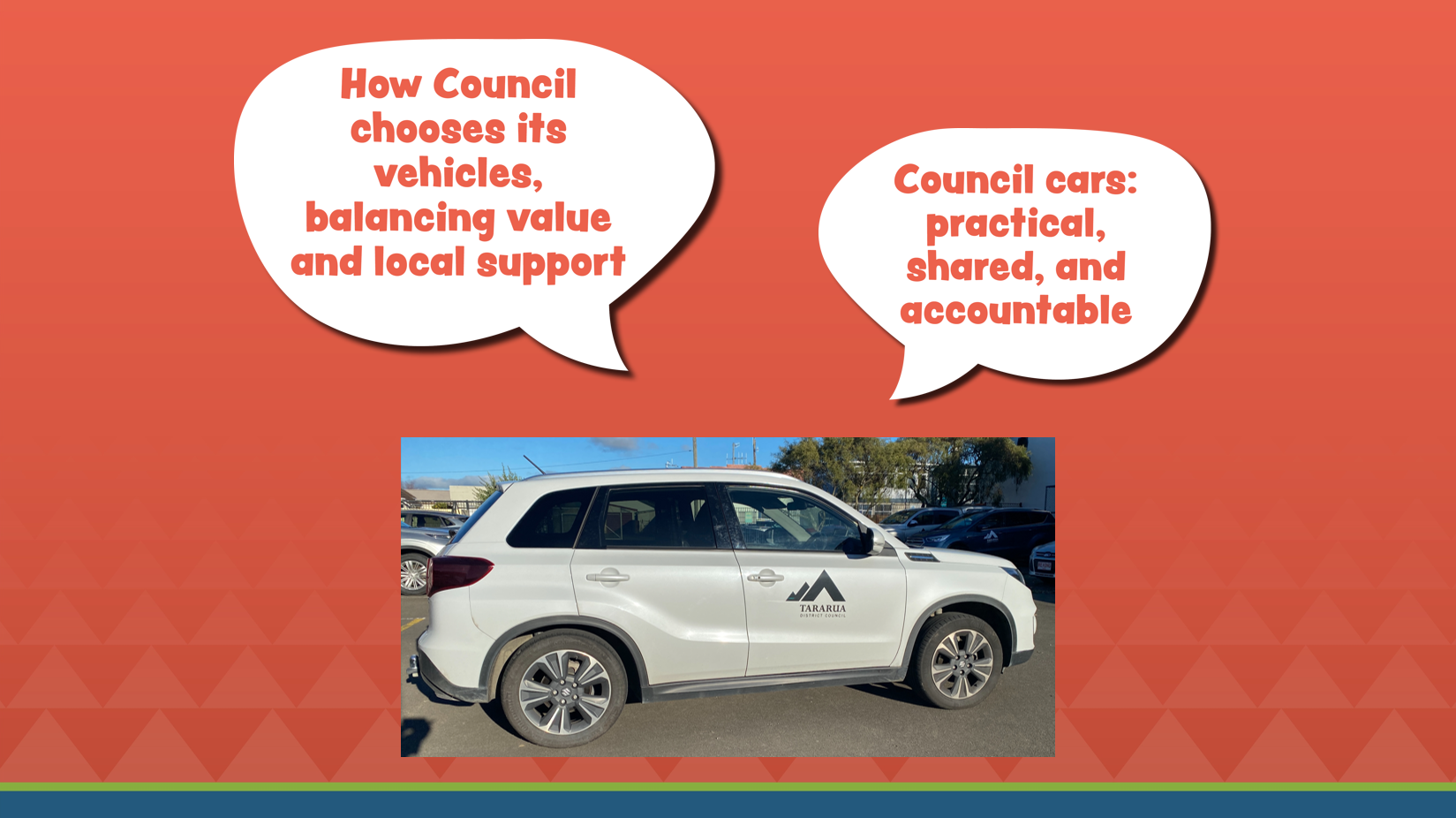Council 101
In every community, questions and concerns are normal - especially when big decisions or changes are being discussed.
This page is about providing clear, straightforward information on some of the topics people have been talking about.
Our aim is simply to share the facts, so everyone can feel confident they have the right information.
Staff turnover for the 2024/25 year was 11%, well below the national average of 21,4% across both public and private sectors (Lawson William, 2024).
We're proud of the many people who choose to build their careers here - and we're investing in their wellbeing, growth, and sense of belonging. While it's natural for some people to move on, feedback from recent staff surveys show that engagement and satisfaction have steadily improved in recent years.
Council is one of the largest employers in the Tararua District, employing around 129 people (at the time of writing). 83% of our staff live in the district.
Most of the staff are a part of this community and care deeply about this district. We also live here, we pay rates, we drive on our roads, our children play in our playgrounds and sports fields, we also drink our water.
The Tararua Alliance employ 114 people (at the time of writing), of which 68% are local.
Some of those who live outside the district still have strong ties to Tararua, having grown up or gone to school here, or have close family connections in the area.
While we aim to hire locally wherever possible, it’s not always achievable. Sometimes, there are no local applicants for specialist roles. In those cases, Council must look beyond the district to find the right skills and fill critical positions.
We know it can feel like things take time, and that’s because they do! Councils must meet strict national laws and standards designed to protect people, property, and the environment.
From the Building Act and Resource Management Act to the national Drinking Water Standards, our team follows more than 100 pieces of legislation and manages 63 resource consents with over 4,000 individual conditions just for water alone.
That’s a lot of detail, but it’s there for good reason. We’re responsible for making sure every project is safe, compliant, and built to last. Taking the time to do things properly means fewer mistakes, stronger outcomes, and better value for our community.
A large portion of your rates goes toward essential services like water, roads, rubbish collection, and wastewater. These aren’t optional – they’re the basics that keep our communities running. Of the current 7.29% average rates increase, 4.19% is to help cover the costs of water, wastewater, and stormwater services. Without water services included, the draft average rates increase would have been 3.10%, which is the total increase of council services except water.
For a small council like ours, every dollar counts. Flashy or ‘nice to have’ projects can’t take priority over critical infrastructure – and we simply don’t have the funding to do everything.
So, when people ask, “Why doesn’t Council just pay for it?” – the honest answer is: we already are, for the things that matter most.
Most of the taxes we pay go to central government, not to local councils.
In fact, less than 10% of all taxes collected in New Zealand go to local government. Each time you pay income tax, GST, or fuel tax, that money goes to Wellington, not your local Council.
Meanwhile, local councils are responsible for a huge amount of the infrastructure and services we use every day – like roads, water, waste, parks and libraries.
Infometrics estimates an average kiwi household pays around $2,900 a year in rates – and $37,000 in tax. In small districts, like Tararua, on average power bills are higher than rates.
When you look at an average households total tax and rates bill, around 93% goes to central government, and only 7% to local government. (These numbers are provided by Local Government New Zealand).
Council vehicles aren’t purchased like private ones. We use a Government-approved procurement system that gets significant discounts and compares prices across multiple brands and suppliers.
We always go with the most cost-effective option — and when that’s a local supplier, even better. We’re also being smart about what we buy: replacing utes with smaller, more efficient cars helps reduce both costs and emissions.
Even better, around 90% of our vehicle servicing is done locally, and all tyres are bought from local businesses. So our fleet still contributes strongly to the district economy.
Council and the Alliance manage a large fleet — about 60 vehicles — because of the size and distances across our district. Some staff take vehicles home because they’re on-call for emergency response, animal control, or roading work.
Private use is not allowed, except for three approved staff vehicles. These are used to transport staff to and from Palmerston North, and during the day, they’re returned to the shared pool for others to use. None of the Alliance vehicles are available for private use.
We have fewer people to share the costs, but we still have to provide the same essential services as big cities.
Things like fixing roads, upgrading pipes, or preparing for climate change don’t get cheaper just because we have fewer ratepayers.
That means councils like ours often have to make tough choices about what we can afford to do – and when.
Over the last few years:
- Bridges are 38% more expensive to build
- Roads are 27% more expensive to build
- Water supply systems are 27% more expensive to build
- And prices are expected to go up more in the coming years
- Meeting ongoing national compliance and engineering standards.
Council doesn’t make a profit from fees or charges. In fact, these help reduce the pressure on rates by making sure the people who use a service contribute to its cost — a “user pays” approach that keeps things fair.
Fees like dog registration, rubbish bags, or pool entry only cover part of the true cost. For example, dog rego covers just 20% of what it actually costs to run the service — the other 80% is funded by rates.
So when you pay a fee, you’re helping share the load — not padding Council’s bank account.
Council listens – and often acts on feedback.
Council decisions are guided by community input, legal requirements, and affordability – and while we can’t please everyone, we work hard to find the right balance.
When people take part in the right way, their voices can and do make a difference. The most effective way to be heard is through formal submissions during consultations, presenting at hearings, or providing feedback through official channels. Social media is great for conversation, but it’s not a formal complaints channel.
Here are some real examples of how feedback changed outcomes:
In the Long Term Plan, farmers raised concerns about rating non-connected or non-contiguous land parcels – Council listened and removed the proposal.
The Traffic and Road Use Bylaw now includes clearer rules around heavy vehicle parking, thanks to public input.
The Freedom Camping Bylaw was updated to better balance community concerns with public access.
So yes – we do listen. And when feedback comes through the right channels, it can lead to real change.
